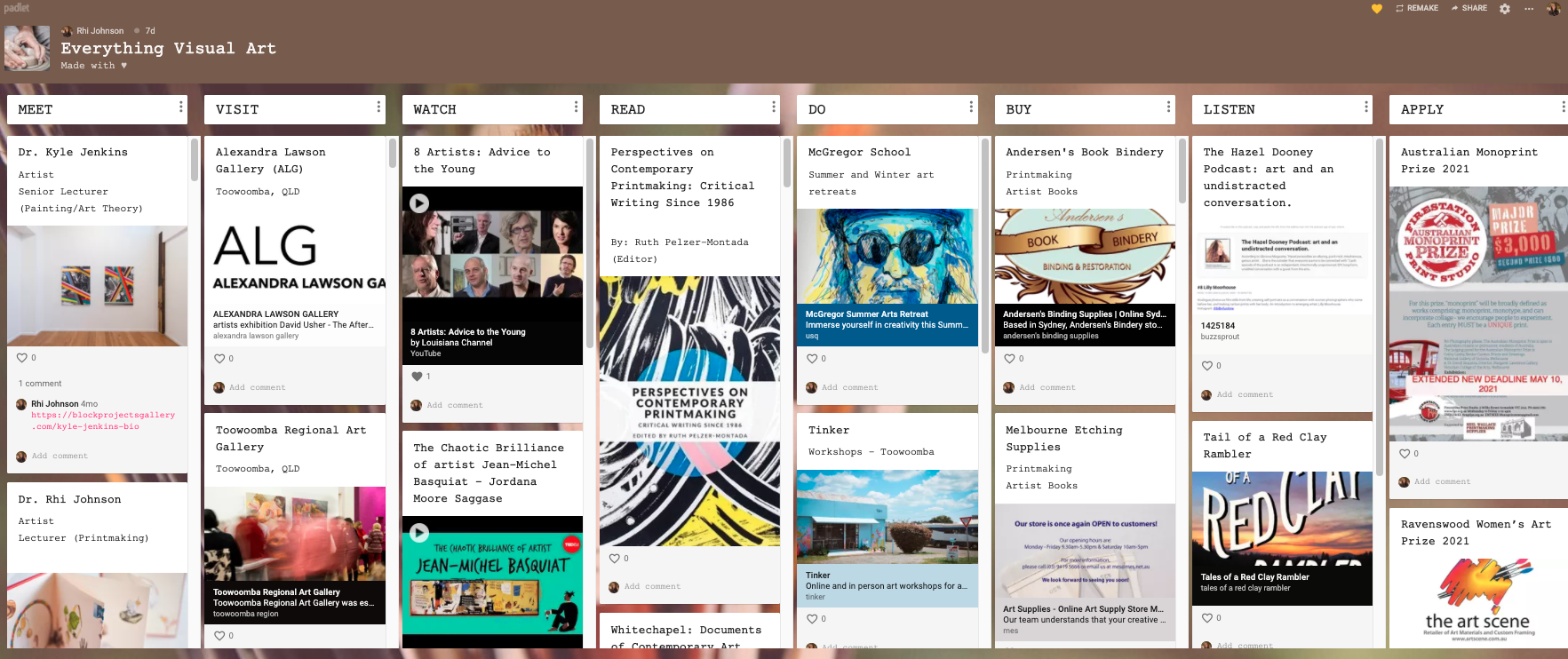TECHNOLOGY DEMONSTRATOR INITIATIVE 2020
Expanding Creative Communities: Facilitating Multimodal Forms of Engagement and Learning in Tertiary Visual Arts
Dr Rhi Johnson (BVisArt, BFineArts(Hons), PhD) is a Lecturer in Visual Arts (Printmaking), and is the First Year Experience and Employability Lead for the School of Creative Arts at USQ. She teaches a range of practical techniques including linoprinting, screenprinting, etching, monoprinting and bookbinding.
Download 2020 TechDem Report:
2020 TechDem – FULL Report (PDF: 3MB)
Extracts:
Course and cohort
VIS1010: 2D Studio Foundations | 54 undergraduate students
Context
The teaching of Visual Arts in higher education tends to emphasise practice and individual student learning. Student expectations also mirror this tendency, which becomes even more challenging with online learning and digital networking becoming more prevalent in the design and delivery of tertiary level Visual Art.
At USQ, two gaps were identified as problematic with the current model, including the absence of a consistent, informal and interactive online platform for the dissemination of key arts information and digital networking; and the absence of student eportfolios as a rich repository of visual and written information which could become the precursor to artist websites, professional CVs and blog material.
Description of course design
The VIS1010 2D Studio Foundations course is a new course designed for teaching in Semester 1, 2021. It is a first year level Visual Art Studio Practice course, which is fundamental to students forming a creative and supportive peer network, as well as serving as the first stage in working towards a professional arts practice and profile, as part of the new Bachelor of Visual Art (BVSA) program.
The aim of this project is to introduce two digital technologies into VIS1010 to align with the current University, School of Creative Arts and Visual Art discipline priorities of strengthening the First Year Experience and embedding Graduate Employability. The designed course includes two key interventions to enhance student engagement based on Redmond et al’s (2018) Online Engagement Framework elements and indicators:
Intervention 1: Padlets for Social, Behavioural and Collaborative Engagement
Used by the course examiner to build community and create a sense of belonging for students through the curation of relevant resources to support Visual Arts program and course content, to foster an increased sense of agency and identity of first year students as a visual artist, and promoting multidisciplinary skill sets and platforms, which will enhance student’s knowledge of industry and their development of employable attributes.

Intervention 2: ePortfolio for Cognitive, Behavioural and Emotional Engagement
Used for VIS1010 students to create an emerging artist website which forms part of each student’s assessable outcomes for the course and sets them up with an eportfolio space that can be added to in each practical studio course throughout a Visual Art students’ degree experience and continue to be used upon graduation. Students will be encouraged to use the eportfolio to document the progress of their work, encourage critical reflection, and develop a product to ultimately bring to industry that effectively communicates and showcases professional outcomes and employability skills.


